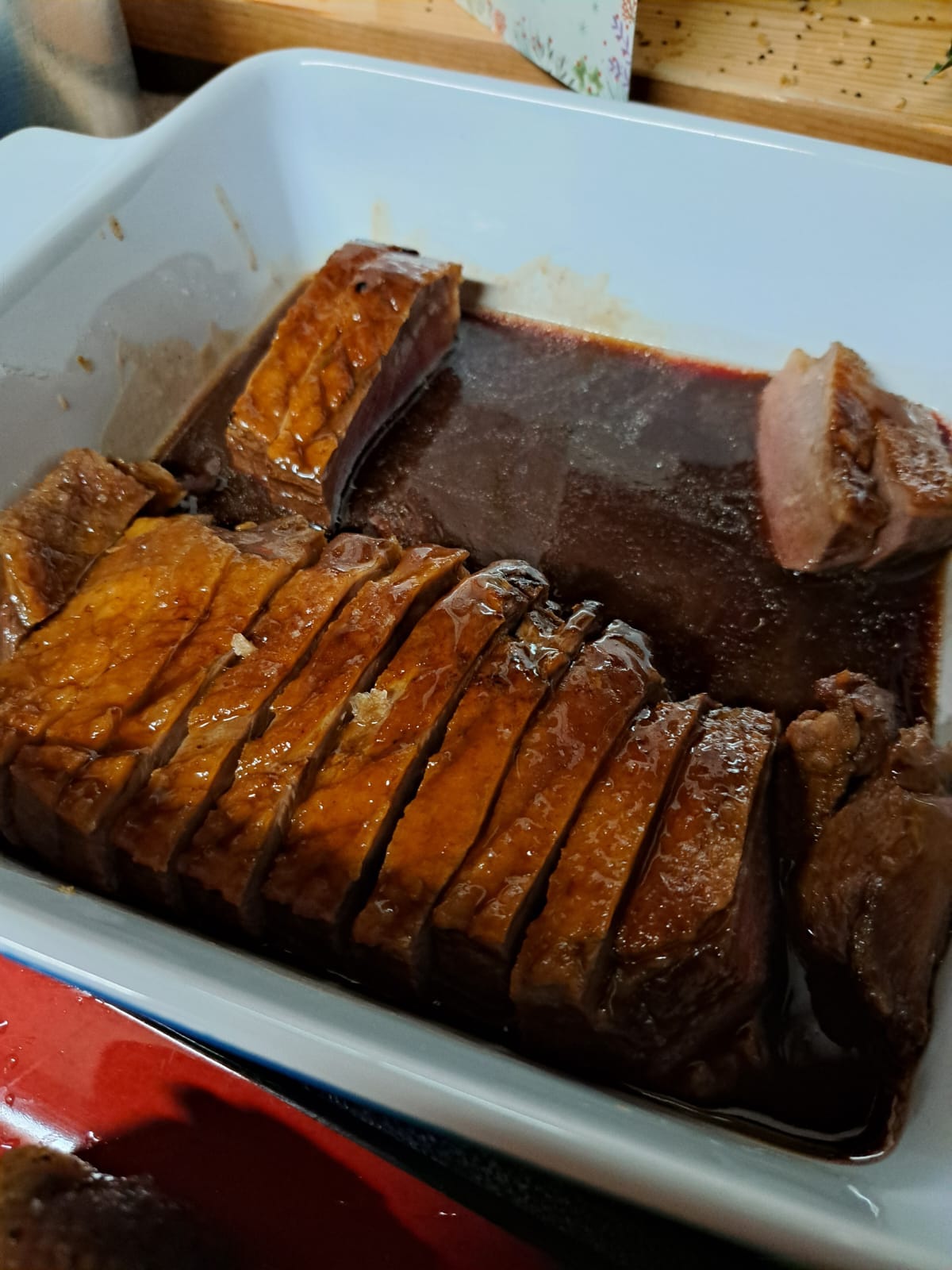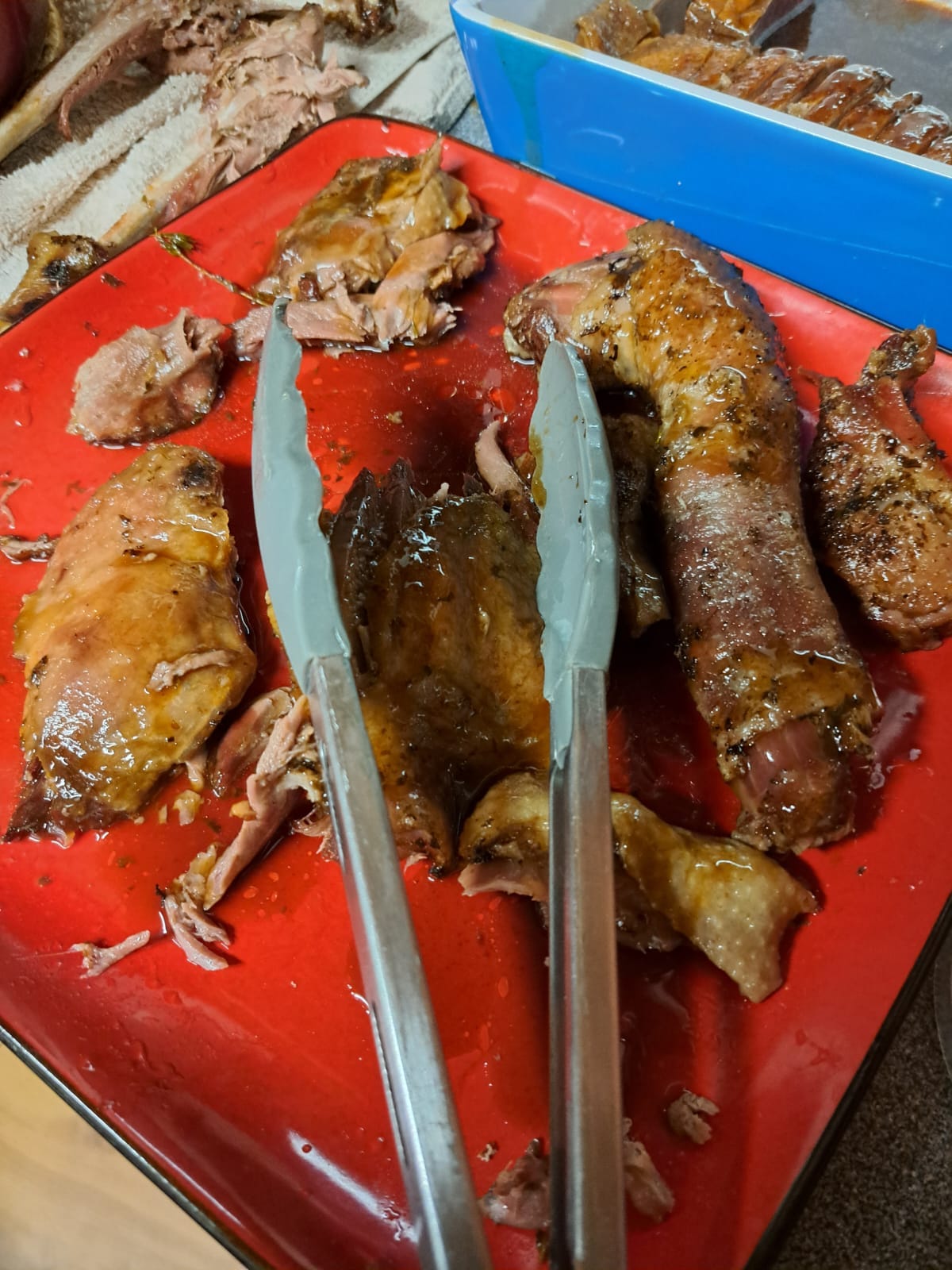Whatever happened to the Christmas goose? When did it disappear from our festive table and why did it happen? These thoughts come to me as I serve goose for my partner’s family for Little Christmas (or what we call in Ireland Nollaig na mBan). I’m a day early this year as the Sunday falls on the 5th, but the goose is ready, and it must be eaten. Her father not only relishes goose but also relishes his memories of eating goose when he was younger. Goose cooked over a turf fire in a big place pot, stuffed with potato, onions, and sage. It would be hard to beat that with a stick.
While I don’t have time to explain how Little Christmas (or rather old Christmas) gets its name, it is sufficient to say that in Ireland, Nollaig na mBan, the only day of the year when the husbands did the housework, a goose would be roasted and served, that is, according to Margaret Hickey in her wonderful Ireland's green larder : the definitive history of Irish food and drink (2018).
So where did the goose go, and how did the turkey replace it? While turkeys have been eaten in Ireland since at least the 17th century, according to Bríd Mahon in her book Land of Milk and Honey (1991), it's only since the beginning of the 20th century that they have been our go-to bird at Christmas.
For the rest of Irish food history, since Christmas arrived, goose was the staple of our festive celebrations. In the past, when few had ovens, goose was cooked over a turf fire in a big black pot (hence my partner’s father’s food memories). It would be partially braised and partially roasted. Parsnip and bacon could be added to the pot, as well as carrots, onions and other herbs and spices such as sage, cloves and a pinch of nutmeg.
If you had money you would feast on goose every Sunday from September until Christmas. The goose would be stuffed with potatoes, then roasted over a turf fire. The first goose of the season, called Michaelmas goose, as the tradition became known, was supposed to signify prosperity for the year ahead. The landlord would often be presented with the cooked goose along with the rent for that quarter.
Goose was also a staple around Christmas time because a goose born in spring would be the perfect size by then. Christmas goose differs from Michaelmas goose in terms of what the goose would have been fed. Christmas goose was always finished on wheat as opposed to only grass. This would have made it fatter, which in turn means it would have fed more people.
Christmas goose was often accompanied with dumplings made from suet. In his 19th-century Irish novel Knocknagow (1879), Charles J. Kickham wrote of a young farmer who:
Partook of boiled goose in his own house on an average of once a week … the goose was always dismembered before it was put into the pot with the dumplings.
As well as dumplings, goose would be stuffed with potatoes and served with apple sauce. Though this was a traditional way of cooking duck in Ireland, a recipe for goose in this manner is included in Darina Allen’s A Simply Delicious Christmas (1989). Don’t be fooled by the size of a goose though, as Allen rightly remarks, it has a deceptively large carcass, so allow 450g per person if you are going to get yourself a goose.
We have Dickens, it seems, to blame for the demise of the Christmas goose in Ireland and the UK. By the Victorian era, turkey had become the centerpiece of the Christmas meal, thanks in part to Queen Victoria's preference and the influence of the story A Christmas Carol (1843) by Charles Dickens, which popularized the idea of a “prize turkey”. In the same story, Dickens positioned the goose as a lesser festive treat, more begetting a poorer family.
But the goose was a rare treat, and a fine one, and the Cratchits were grateful for it.
In the context of the story, the goose is symbol of modesty and togetherness. However, the poverty of the Cratchit family fed into the popular imagination and many began to shun the goose or at least take the turkey instead. The turkey was for the Queen after all; the goose was for the farmer.
The rise of the turkey
Once turkey took hold, the days of the geese were numbered. Turkeys became increasingly popular from the 19th century onwards because they provided more meat than a goose and were better suited to feeding larger families. However, it also fell out of favor due to other social, economic, and cultural shifts. Goose farming required more space and resources, making geese more expensive than turkeys, particularly as turkey farming scaled up. Turkeys could be raised more easily in larger numbers, leading to a decline in the affordability and availability of geese.
Furthermore, goose is fattier, with a stronger gamier flavour compared to turkey, which many people prefer for its leaner and milder taste.
Over time, turkey became associated with festive meals, particularly in the United States with Thanksgiving, which influenced Christmas traditions in other countries, especially Ireland in the latter half of the 20th century. The soft power of American food culture ate into our tradition of a Christmas Goose.
While most of us will not partake of a goose anytime soon, it’s worthwhile to examine its place in Irish food history and appreciate the shift to the ubiquitous turkey. It may seem the turkey has been around forever, but, like the potato, it's a new comer to Irish cuisine.
Though last year I roasted the goose whole (as per recipe below), this year I separated out the breasts from the legs. The reason for this, which goes for duck too, is that goose breast is best served medium rare (around 56C) while goose leg is best well done (+72C). It’s exceedingly difficult to achieve this when roasting the goose whole so you can see my predicament. However this causes more work, and it is something that may not interest you.
How to roast a Little Christmas goose
First make the stuffing: fry one diced onion in 50g of butter until soft. Add 500g of chopped cooking apples and a sprig of rosemary, thyme, and sage. When the apples are soft, remove from the heat. Fold in 750g of cooked mashed potato and season to taste. When the mixture is cold, stuff the cavity of the goose.
You can choose to leave out the apples and use breadcrumbs as well as garlic instead. You can even go wild and throw in some diced Gubbeen Chorizo.
Score the skin of the goose and roast the in a 180C oven for 20 minutes per 500g, basting every 30 minutes. When the goose is ready, the juices will run clear, or it will be +70C in the thickest part.
While a turf fire with a pot over it may be hard to find, placing a piece of smouldering turf in your oven will do just as well.
All you need is turf and a blowtorch.
Enjoy, Jp.
P.S.
For more Irish food stories, pick up a signed copy of my An Irish Food Story: 100 Foods that made us (Nine Bean Rows, 2024) from our Aniar website.
We ship anywhere in the world.









I have eaten Goose on three occasions and that was enough to know it wasn’t for me. It was cooked by a Ballymalloo cook so they what they were doing so it was down to my taste buds. I find it very wet and fatty tasting.
info@saltersfarm.ie